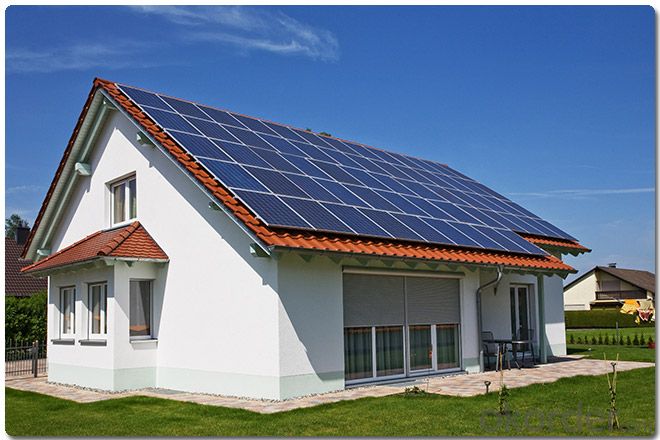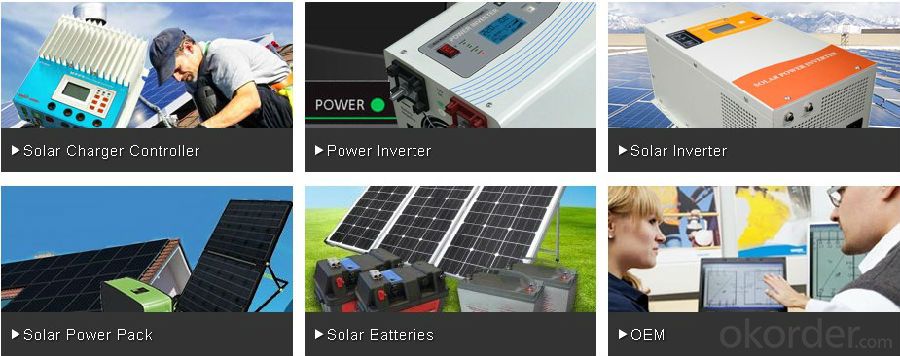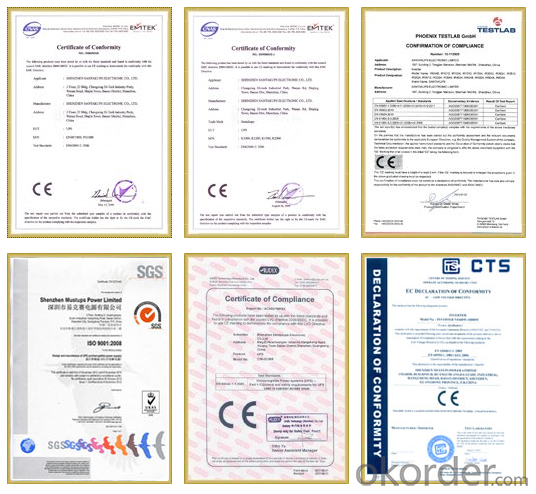Low Frequency Pure Sine Wave Inverter EP2000 Series 300W/400W Reliable
- Loading Port:
- Ningbo
- Payment Terms:
- TT or LC
- Min Order Qty:
- 50 unit
- Supply Capability:
- 1000 unit/month
OKorder Service Pledge
OKorder Financial Service
You Might Also Like
South Africa EP1000 2000VA/1200W home solar power inverter made in China
The Specification of 2000VA/1200W home solar power inverter
EP modified sine wave inverter is a combination of an inverter and a charge. It offers a smart, convenient and economic way to get AC power supply from DC source for most electrical equipment. When the AC input is available, it will switch to AC power supply and starts charging on the batteries.
The PG series converts DC power into AC power. With a continuous output and compact design, the units is ideal for running TVs, Stereos, Laptop and computers and other home appliances .PG series will automatically transfer to inverter and provide power when AC supply is interrupted unexpectedly.
The Features of 2000VA/1200W home solar power inverter
Automatic line-to-battery switchover
Selectable input voltage ranges, power inverter has wide input range:90-280Vac narrow input range:170-280Vac
Small power inverter has high efficient DC-to-AC conversion, minimizing energy loss
Rack Tower design for flexible placement
Small power inverter built-in enhanced charger 8Amps for up to 100Ah battery
Intelligent 2-stage charger control for efficient charging and preventing overcharge
Overload protection
Auto restart while AC recovery
Multi-function LED indications and buzzer alarms
Small scale and cost effective inverter for home appliance and office equipment
LED indicator of power inverter for the battery mode, AC mode, battery charging mode, overload mode and fault warning
Over 95% efficiency in AC to AC mode
Audible alarm for the low battery, overload, overcharge and fault
Full protection of power inverter against deep discharge, overcharge, overload protection, short circuit, overvoltage and under voltage (compact power inverter)
*** 10A/ 20A charge current adjustable, LCD/ LED available power inverter EP1000 1000w 220vac solar inverter***
The Specifications of 2000VA/1200W home solar power inverter :
Rated Capacity | 500VA/300W | 1000VA/600W | 2000VA/1200W |
1.Input
Models | 120V Models | 230V Models | |
Nominal Voltage | 110V/115V/120V Selectable | 220V/230V/240V Selectable | |
Input Frequency | 47Hz ~ 65Hz, 50/60Hz Auto-Sensing | ||
Efficiency | 95%(Normal Mode) | ||
Noise Filtering | Full Time EMI/RFI Filtering | ||
Over Current Protection | By Re-Settable Over Current Protector | ||
Voltage Range | 90 - 145VAC Or 170-280VAC ( Narrow Range ) 50-145VAC / 90 280VAC (Wide Range) | ||
Surge Protection | 324 Joules | ||
2.Output
Rated Power | 500va/300w | 1000VA/600W | 2000VA/12000W | |
Output Voltage | 100V/110V/115V/120V Selectable | 200V/220V/230V/240v selectable | ||
Voltage Waveform | Modified Sine Wave | |||
Crest Factor | 3:1 | |||
Output Frequency | Auto Select For 50/60Hz | |||
Regulation (Battery Mode) | 10% -18% | |||
Transfer Time | 15ms Typical 50ms Max | |||
Protection | Over Load, Discharge, Overcharged | |||
Battery Type | Lead-Acid 12V 25Ah ~ 250Ah |
Voltage | 500VA/1000VA :DC12V ; 2000VA :DC24V |
Backup Time | Depend On Battery |
Charging Method | 3 Steps Super Charge Mode |
Charging Current | 10A At Normal Line And Normal Temperature |
Protection | Over Current Protection Over Charging Voltage Protection (No More Than 15V) Deep Discharge, Overload Protection |
3.Communications & Management
Control Panel (LED Indicator ) | Ac Mode | Green Lighting |
Battery Model | Yellow Lighting | |
Battery Charging Mode | Green Flashing Every 2 Seconds | |
Over Load | Red Flashing Every 0.5 Second | |
Fault | Red Lighting | |
Audible Alarm | Low Battery | Sounding Every 2 Seconds |
Overload | Sounding Every 0.5 Second | |
Fault | Continuously Sounding |
4.Environment And Safety
Operating Environment | 0~40 Degrees Centigrade, 0 - 90% Non Condensing |
Transit/Storage Temperature | -15°C To 55°C (5°F To 131°F) |
Operating Altitude | 0 ~ 3000 Meters |
Audible Noise | 50dba |
Safety Markings | CE.FCC |
Quality Control System | ISO 9001 |
5.Physical
Dimensions(H×D×W) | 355*130*230mm | ||
N.W / G.W(Kg) | 1.6 / 2 (Kg) | 2 / 2.3 (Kg) | 2.2 / 2.6 (Kg) |
Packing | 6pcs/Carton | ||



Warrenty
provides a 1~3 year limited warranty (“Warranty”) against defects in materials and workmanship for its Uninterruptible power supply, Power inverter/chargers, Solar charge controllers, Battery Products (“Product”).
The term of this Warranty begins on the Product(s) initial purchase date, or the date of receipt of the Product(s) by the end user, whichever is later. This must be indicated on the invoice, bill of sale, and/or warranty registration card submitted to MUST-Solar. This Warranty applies to the original MUST-Solar Product purchaser, and is transferable only if the Product remains installed in the original use location.
FAQ
1. How do I decide which system is right for me ?
For protection from long outages, include a generator or solar panels in your Must solar system. Shorter outages can be handled by a battery-only system.
2. Where my system will be installed ?
Must solar systems are usually wall-mounted near a home's main electrical (circuit breaker) panel.
3. How do I install my system ?
A must solar backup inverter is connected to a home electric system , we will supply detailed installation manual and videos for our customers .
- Q:How does a three-phase solar inverter differ from a single-phase inverter?
- A three-phase solar inverter differs from a single-phase inverter in terms of the number of electrical phases and the power output capacity. While a single-phase inverter is designed to convert the direct current (DC) generated by solar panels into alternating current (AC) with a single electrical phase, a three-phase inverter converts DC power into AC power with three electrical phases. This allows for a more balanced distribution of power across the three phases, resulting in increased efficiency and higher power output. Additionally, three-phase inverters are commonly used in industrial and commercial settings where higher power demands are required, while single-phase inverters are typically used in residential applications with lower power requirements.
- Q:Can a solar inverter be used off-grid?
- Yes, a solar inverter can be used off-grid. Off-grid systems typically include a solar panel array, a charge controller, batteries for energy storage, and an inverter to convert the stored DC (direct current) electricity from the batteries into AC (alternating current) electricity for use in off-grid applications. The inverter plays a crucial role in converting the DC power from the solar panels or batteries into usable AC power, making it possible to power various appliances and devices off-grid using solar energy.
- Q:Can a solar inverter be used with different types of solar panel mounting systems?
- Yes, a solar inverter can be used with different types of solar panel mounting systems. The solar inverter is designed to convert the direct current (DC) generated by the solar panels into alternating current (AC) that can be used to power appliances and electrical devices. Regardless of the mounting system, as long as the solar panels are connected to the solar inverter, it can efficiently convert the generated energy for use.
- Q:How does a solar inverter handle different temperature conditions?
- A solar inverter is designed to handle different temperature conditions by incorporating various protective measures. It typically includes temperature sensors and cooling systems to monitor and regulate its internal temperature. Additionally, it may have heat sinks or fans to dissipate excess heat generated during operation. These features ensure that the inverter operates within its optimal temperature range, maximizing efficiency and protecting it from potential damage caused by extreme temperature variations.
- Q:What is the role of a solar inverter in a solar-powered ventilation system?
- The role of a solar inverter in a solar-powered ventilation system is to convert the direct current (DC) electricity produced by the solar panels into alternating current (AC) electricity that can be used to power the ventilation system. The inverter ensures that the electricity generated by the solar panels is compatible with the electrical requirements of the ventilation system, enabling it to operate efficiently and effectively.
- Q:What is the maximum AC current output of a solar inverter?
- The maximum AC current output of a solar inverter depends on its size and rating. It can range from a few amps to several hundred amps, typically ranging between 5-100 amps for residential inverters and going up to higher currents for commercial or utility-scale inverters.
- Q:Can a solar inverter be used with a single solar panel?
- Yes, a solar inverter can be used with a single solar panel. The purpose of a solar inverter is to convert the direct current (DC) generated by the solar panel into usable alternating current (AC) electricity. Whether you have one or multiple solar panels, a solar inverter is necessary to convert the DC power into AC power that can be used to power electrical appliances or be fed back into the grid.
- Q:How does a solar inverter handle harmonic distortion?
- A solar inverter handles harmonic distortion by incorporating various filtering and control mechanisms. These mechanisms help to minimize and mitigate the impact of harmonic distortion caused by the non-linear loads associated with solar panels. The inverter typically employs filters and algorithms that actively monitor and adjust the output waveform to reduce harmonics. This ensures that the generated electricity is of high quality and meets the required standards for grid connection.
- Q:Can a solar inverter be monitored remotely?
- Yes, a solar inverter can be monitored remotely. With the help of advanced technologies and internet connectivity, solar inverters can be connected to a monitoring system that allows real-time monitoring and control from a remote location. This remote monitoring feature enables users to track the performance, energy production, and potential issues of their solar inverters without being physically present at the installation site.
- Q:Photovoltaic grid-connected inverter problem
- But Baidu Encyclopedia clearly pointed out: the zero line is the secondary side of the transformer leads the neutral point of the line, and the phase line constitutes a circuit for power supply equipment.
1. Manufacturer Overview |
|
|---|---|
| Location | |
| Year Established | |
| Annual Output Value | |
| Main Markets | |
| Company Certifications | |
2. Manufacturer Certificates |
|
|---|---|
| a) Certification Name | |
| Range | |
| Reference | |
| Validity Period | |
3. Manufacturer Capability |
|
|---|---|
| a)Trade Capacity | |
| Nearest Port | |
| Export Percentage | |
| No.of Employees in Trade Department | |
| Language Spoken: | |
| b)Factory Information | |
| Factory Size: | |
| No. of Production Lines | |
| Contract Manufacturing | |
| Product Price Range | |
Send your message to us
Low Frequency Pure Sine Wave Inverter EP2000 Series 300W/400W Reliable
- Loading Port:
- Ningbo
- Payment Terms:
- TT or LC
- Min Order Qty:
- 50 unit
- Supply Capability:
- 1000 unit/month
OKorder Service Pledge
OKorder Financial Service
Similar products
New products
Hot products
Related keywords






























